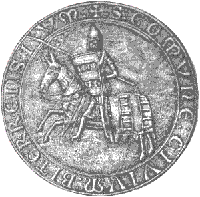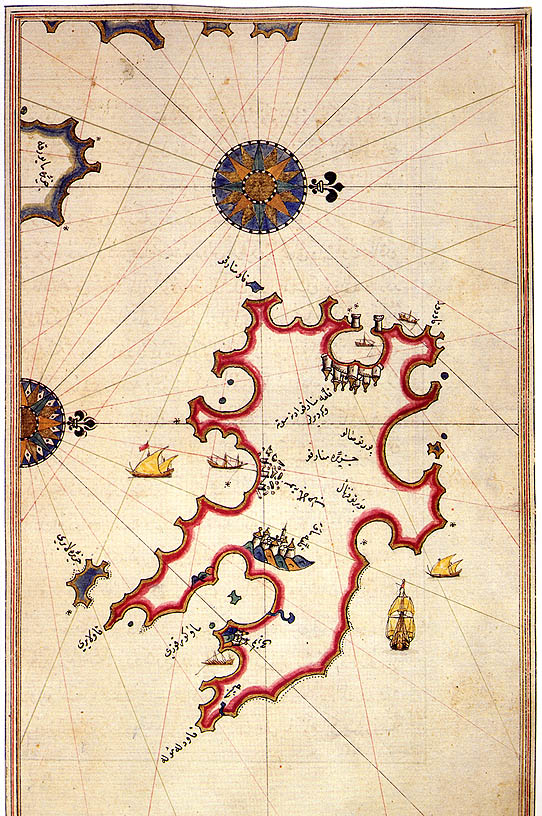|
1204 In Poetry
Events *Cadenet wrote a '' sirventes'' criticising Raymond Roger Trencavel for his poor manners on a visit to Toulouse Births * Abû 'Uthmân Sa'îd ibn Hakam al Qurashi (died 1282), Arabic poet in Menorca Deaths * Fujiwara no Shunzei (born 1114 Year 1114 ( MCXIV) was a common year starting on Thursday (link will display the full calendar) of the Julian calendar. Events By place Europe * January 7 – Emperor Henry V marries Matilda (or Maude), 11-year-old daughter of ...), Japanese poet and nobleman 13th-century poetry Poetry {{poetry-year-stub ... [...More Info...] [...Related Items...] OR: [Wikipedia] [Google] [Baidu] |
Cadenet (troubadour)
Cadenet (c. 1160 – c. 1235) was a Provençal troubadour (''trobador'') who lived and wrote at the court of Raymond VI of Toulouse and eventually made a reputation in Spain. Of his twenty-five surviving songs, twenty-one (or twenty-three) are ''cansos'', with one ''alba'', one ''partimen'', one ''pastorela'', and one religious piece represented. Two of his melodies survive. Life During Cadenet's childhood Raymond V of Toulouse and Bertrand I of Forcalquier went to war over the Vaucluse. Cadenet's father was killed in battle fighting for the count of Forcalquier and the castle of Cadenet was destroyed. Cadenet was taken captive or as a hostage to the court of Toulouse, where he became known after his birthplace, a term which also mean "juniper grove" (''cade'' is Occitan for "juniper"). He rose to prominence in the court under the patronage of several prominent families with close connections to the Cathar movement. According to his late thirteenth-century '' vida'', ''. . . e ... [...More Info...] [...Related Items...] OR: [Wikipedia] [Google] [Baidu] |
Sirventes
The ''sirventes'' or ''serventes'' (), sometimes translated as "service song", was a genre of Old Occitan lyric poetry practiced by the troubadours. The name comes from ''sirvent'' ('serviceman'), from whose perspective the song is allegedly written. Sirventes usually (possibly, always) took the form of parodies, borrowing the melody, metrical structure and often even the rhymes of a well-known piece to address a controversial subject, often a current event. The original piece was usually a canso, but there are sirventes written as contrafacta of (at least) sestinas and pastorelas. They were always opinionated, being either highly complimentary or, more often, oozing with vitriol; however, these features are not unique to the sirventes, so a piece can be positively identified as one only if its nature is explicitly stated in the text (which it often is) or the original piece it is based on has been preserved (which is also often the case: for a parody to work, it had to targe ... [...More Info...] [...Related Items...] OR: [Wikipedia] [Google] [Baidu] |
Raymond Roger Trencavel
Raymond Roger Trencavel (also Raimond, oc, Raimon Rogièr; 1185 – 10 November 1209) was a member of the noble Trencavel family. He was viscount of Béziers and Albi (and thus a vassal of the count of Toulouse), and viscount of Carcassonne and the Razès (and thus a vassal of the count of Barcelona, which was also ruling Aragon at this time). Raymond-Roger was the son of Roger II Trencavel (d. 1194), and of Azalais of Toulouse (also known as the "Countess of Burlats"), daughter of Raymond V of Toulouse and sister of Raymond VI. Raymond-Roger was married to Agnes of Montpellier. His aunt, Beatrice of Béziers, was the second wife of Raymond VI of Toulouse. Raymond-Roger lived in the Château Comtal in the fortified hill town of Carcassonne. The château was built by his ancestors in the 11th century. Raymond-Roger was not a Cathar, although many of his subjects were. He adopted a ''laissez-faire'' attitude to Catharism – and to other cultures and religions. He relied st ... [...More Info...] [...Related Items...] OR: [Wikipedia] [Google] [Baidu] |
Toulouse
Toulouse ( , ; oc, Tolosa ) is the Prefectures in France, prefecture of the Departments of France, French department of Haute-Garonne and of the larger Regions of France, region of Occitania (administrative region), Occitania. The city is on the banks of the Garonne, River Garonne, from the Mediterranean Sea, from the Atlantic Ocean and from Paris. It is the List of communes in France with over 20,000 inhabitants, fourth-largest city in France after Paris, Marseille and Lyon, with 493,465 inhabitants within its municipal boundaries (2019 census); its Functional area (France), metropolitan area has a population of 1,454,158 inhabitants (2019 census). Toulouse is the central city of one of the 20 Métropole, French Métropoles, with one of the three strongest Population growth, demographic growth (2013-2019). Toulouse is the centre of the European aerospace industry, with the headquarters of Airbus, the SPOT (satellites), SPOT satellite system, ATR (aircraft manufacturer), ATR ... [...More Info...] [...Related Items...] OR: [Wikipedia] [Google] [Baidu] |
Abû 'Uthmân Sa'îd Ibn Hakam Al Qurashi
Abû ‘Uthman Sa’îd ibn Hakam al Qurashi (30 December 1204 – 9 January 1282) ( ar, أبو عثمان سعيد بن الحكم القرشي) was the first Ra’îs of Manûrqa (modern Menorca) from 1234 to 1282. Early life Sa’îd ibn Hakam was born in the city of Tavira in the Algarve (modern Portugal). He studied philology at Seville, the capital of the Almohad Caliph of Al Andalus, and took part in literary reunions of famous poets. Al Andalus had been in a process of decadence primarily due to the downfall of the Abbasid Caliph which meant the closing of a vital commercial relationship. This situation brought a critical spiral of internal conflicts and external invasions. Because of the political instability in Al Andalus, Sa’îd ibn Hakam moved to North Africa, to the cities of Bejaïa and Tunis, where he served as secretary to the Almohad governors. Al-Motaserrif of Manûrqa Two years later, he planned to return to Al Andalus, but the situation had worsened ... [...More Info...] [...Related Items...] OR: [Wikipedia] [Google] [Baidu] |
1282 In Poetry
Events * Guiraut Riquier composes the pastorela ''A Sant Pos de Tomeiras'' Births {{Further, 1982 births Deaths * Abû 'Uthmân Sa'îd ibn Hakam al Qurashi (born 1204), Ra'îs of Manûrqa The Ra'îs of Manûrqa is a Muslim political title given to the two governors that from 1234 to 1287 ruled the island of Manûrqa (modern Menorca) as a vassal state of the Christian Kingdom of Majorca. During this period, the island was allowed ..., poet, scholar, writer; in Arabic in Menorca 13th-century poetry Poetry ... [...More Info...] [...Related Items...] OR: [Wikipedia] [Google] [Baidu] |
Menorca
Menorca or Minorca (from la, Insula Minor, , smaller island, later ''Minorica'') is one of the Balearic Islands located in the Mediterranean Sea belonging to Spain. Its name derives from its size, contrasting it with nearby Majorca. Its capital is Mahón ( ca, Maó), situated on the island's eastern end, although Menorca is not a province and forms a political union with the other islands in the archipelago. Ciutadella and Mahon are the main ports and largest towns. The port of Mahon is the second biggest natural port in the world. Menorca has a population of approximately 93,397 (at 1 January 2019). It is located 39°47' to 40°00'N, 3°52' to 4°24'E. Its highest point, called El Toro (from Catalan "''turó''" meaning ''hill''), is above sea level. History The island is known for its collection of megalithic stone monuments: ''navetes'', ''taules'' and '' talaiots'', which indicate very early prehistoric human activity. Some of the earliest culture on Menorca was ... [...More Info...] [...Related Items...] OR: [Wikipedia] [Google] [Baidu] |
Fujiwara No Shunzei
was a Japanese poet, courtier, and Buddhist monk of the late Heian period. He was also known as Fujiwara no Toshinari"...there is the further problem, the rendition of the name in romanized form. Teika probably referred to himself as Sadaie, and his father probably called himself Toshinari, but the Sino-Japanese versions of their names were used by their contemporaries, and this practice is still observed." or Shakua (釈阿) and when younger (1123–67) as Akihiro (顕広). He was noted for his innovations in the waka poetic form and compiling the '' Senzai Wakashū'' ("''Collection of a Thousand Years''"), the seventh imperial anthology of waka poetry. Early life Fujiwara no Shunzei was born in 1114. He was a descendant of the statesman Fujiwara no Michinaga and son of of the of the influential aristocratic and poetic Fujiwara clan. His father died when he was ten years old and he was adopted by . As Akiyori's adopted son, he took the name ''Akihiro'' (顕広), but in 1 ... [...More Info...] [...Related Items...] OR: [Wikipedia] [Google] [Baidu] |
1114 In Poetry
Nationality words link to articles with information on the nation's poetry or literature (for instance, Irish or France). Events * 1111: After Norman conquest of England, begins the rapid descent of the Anglo-Saxon language as a written literary language Works published * Tombstone inscription of Vekenega (d. 1111), head of the Benedictine convent of St. Mary in Zadar, is written on four tablets with 20 verses ( hexameters and elegiac couplets), in which an unknown poet credits Vekenega's work for the convent Births Death years link to the corresponding " earin poetry" article. There are conflicting or unreliable sources for the birth years of many people born in this period; where sources conflict, the poet is listed again and the conflict is noted: 1110: * John Tzetzes (died 1180), Byzantine 1114: * Fujiwara no Shunzei (died 1204), Japanese poet and nobleman 1115: * Wace (died 1183), Anglo-Norman author of '' Roman de Brut'' and '' Roman de Rou'' 1118: * Saigyō H� ... [...More Info...] [...Related Items...] OR: [Wikipedia] [Google] [Baidu] |
13th-century Poetry
The 13th century was the century which lasted from January 1, 1201 ( MCCI) through December 31, 1300 ( MCCC) in accordance with the Julian calendar. The Mongol Empire was founded by Genghis Khan, which stretched from Eastern Asia to Eastern Europe. The conquests of Hulagu Khan and other Mongol invasions changed the course of the Muslim world, most notably the Siege of Baghdad (1258), the destruction of the House of Wisdom and the weakening of the Mamluks and Rums which, according to historians, caused the decline of the Islamic Golden Age. Other Muslim powers such as the Mali Empire and Delhi Sultanate conquered large parts of West Africa and the Indian subcontinent, while Buddhism witnessed a decline through the conquest led by Bakhtiyar Khilji. The Southern Song dynasty would begin the century as a prosperous kingdom but would eventually be invaded and annexed into the Yuan dynasty of the Mongols. The Kamakura Shogunate of Japan would be invaded by the Mongols. Goryeo resiste ... [...More Info...] [...Related Items...] OR: [Wikipedia] [Google] [Baidu] |
.jpg)




